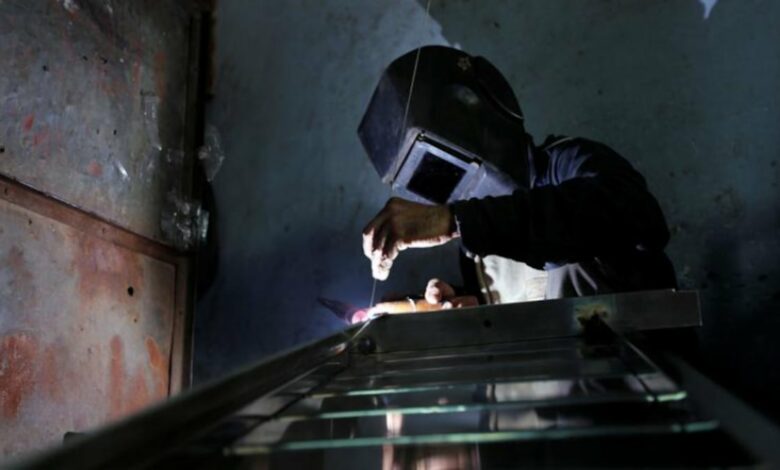
The biggest contributor to the Indian economy is the manufacturing sector. But given the virulent nature of the virus, which emphatically leads to the imposition of the stringent lockdown, leads to degradation and crippling of the same. Given the predicament that the Indian economy finds itself in, it is to be noted that India’s economy needs a robust manufacturing push. This is all the more important given that the other sectors in the Indian economy are still recuperating and the economy is still in the nascent stage of its recovery. The manufacturing sector revival is even more important given the rising unemployment in the economy and the crippled financial state of many residents.
The untapped opportunity
It is to be noted that revamping the manufacturing sector is not only the need of the hour but also a huge opportunity to use the unused potential of the manufacturing sector to become a global manufacturing hub. This is evidently true and possible given China’s debacle of handling the crisis and covid origin discrepancies that actually can present an unadorned opportunity for India. There is an ongoing rage in the market against China, given the covid origins, so much so, that manufactures are considering moving out. Though much of the investment has shifted to Vietnam, but India cannot afford to miss this opportunity bus.

It is to be noted that economic growth can be provided by the revival of the manufacturing sector as the service sector has hugely been crippled by the effects of the lockdowns. In contrast, the growth in the manufacturing sector has been abysmal despite the huge availability of cheap labor and other resources.
The other need for the same is that the service sector has already emphatically shown immense growth in the 1990s and has served the nation well but it is about time that the focus now is deliberately shifted to the boosting of the crucial manufacturing sector.
The deplorable history
It is to be noted that even before the pandemic had descended, the manufacturing pace in the economy was quite lagging. In fact, many reports effectively had suggested that manufacturing activities had emphatically started slowing after the controversial demonetization scheme that was announced and implemented by the Modi government.
Though many might now argue that the Indian government, currently, has been working towards making India the manufacturing hub but it should not be forgotten that its earlier ineffective and diabolical crusades have failed immensely to such an extent that it has had an immense effect on the infrastructure and manufacturing sector in India.

Additionally, it is to be noted that India’s lack of robust business-oriented infrastructure has greatly led to lesser investments and has plagued its pathway to becoming the global manufacturing hub.
Government policies
For instance, the ‘Make in India’ campaign was ambitiously launched by the government. It was the first flagship goal the government had initiated to make India self-reliant. Empathically, it is to be noted that this was being initiated to aim at strategically increasing the share of the production sector. To put the goal in numbers, the share of the sector was to be increased to 25 percent of the Gross Domestic Product (GDP). but on the other hand, the other plans like ‘Startup India’ that have effectively aimed at boosting the production capabilities of the nation have also cooled off in recent decades.

But there are various difficulties that plague the path of development. Given the lack of adequate infrastructure in the country, according to experts, the goal to make India a self-reliant company will be quite arduous and can be completed only by 2025 or by 2030.
With inadequate infrastructure, various reports have also suggested that production employment is nearly half than what it was 5 years ago. This doesn’t particularly spark much confidence in India’s ambitious self-reliant program.
To put the slowdown in the manufacturing sector in numbers, it is to be noted that the manufacturing sector employment stood at 5 crore Indians for the financial year 2016-17, but since then it has declined by 46 percent. Currently, for the financial year 2020-21, manufacturing employment stands at 2.73 crores. Thus, it can be rightfully stated that the manufacturing sector has been strategically losing momentum over the years.
Though the manufacturing activity had gained momentum in the first few months of the financial year 2022 that was mainly due to the low base effect. Thus, this prominently means that the sector is still weak and if the government needs sustained economic growth, the revival of the manufacturing sector is the key.
Why is there a need to shift the focus to the manufacturing sector?
The need to shift the focus is due to the fact that the impact of the covid on the service sector has been immense. The services sector comprises sectors like entertainment, hospitality, aviation, etc. which are actually contact intensive. Given the virulent nature of the virus, these were the worst hit due to the imposition of the lockdowns. But on the other hand, given the rise of the global demand, manufacturing sector can come in to tend to such needs.
On the other hand, the closure of the service or the contact intensive sector had rendered 53 percent of the population jobless. This sector is currently reeling under the effects of the pandemic even as the Indian economy is recuperating. Experts highly suggest that targeted policies by the government should be introduced. These policies should target the domestic manufacturing sector and encourage participation.
However, having said that, it is worthy of maintaining here that the government has already been introducing several measures to emphatically boost domestic manufacturing. This is being done under the ambitious ‘Atmnanirbhar Bharat’ mission. Certain plans have been crafted to introduce subsidies to various manufacturers in the country and to simplify the tax rules. This will emphatically encourage the global investors to invest in the country leading to the inflow of the FDI.




